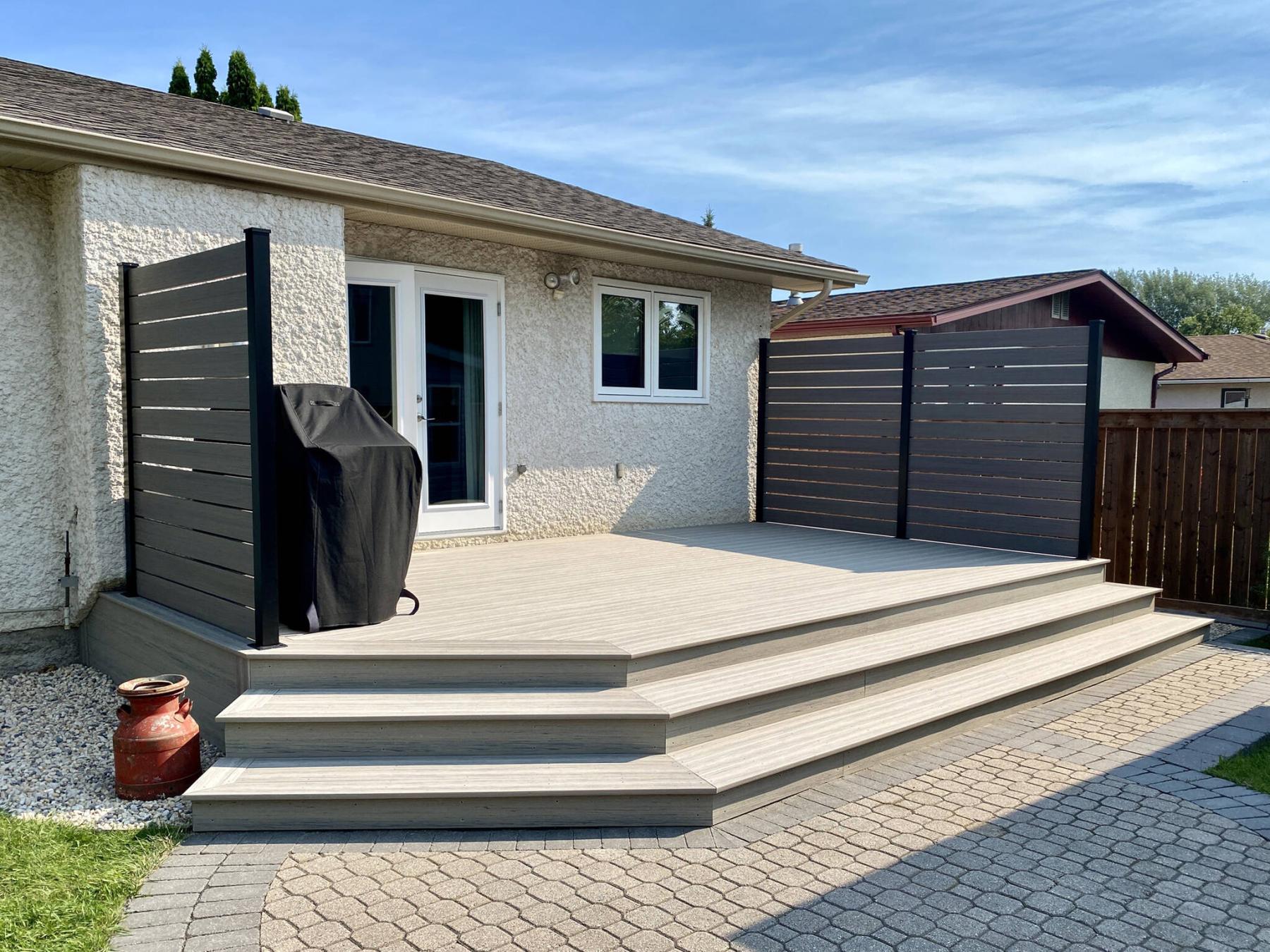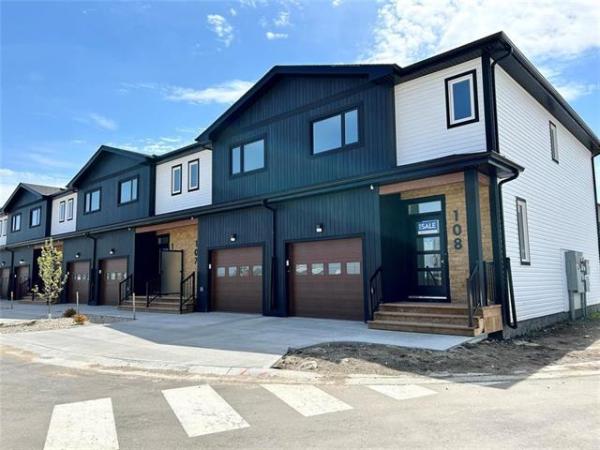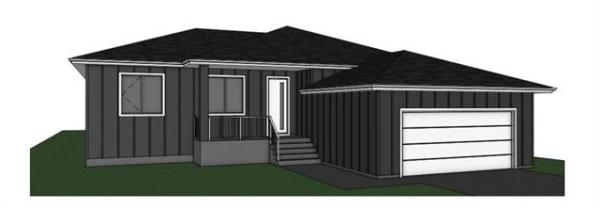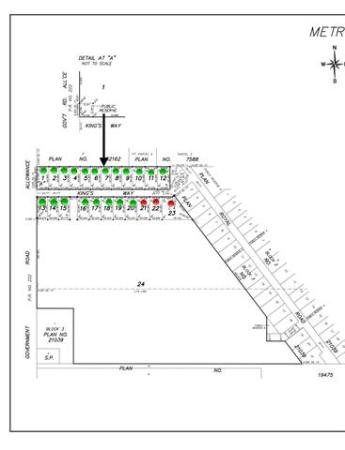
A two-post, single-section wall was created as a BBQ nook.

The main three-post, double-section privacy wall at the far end of the deck is 12 boards high, with half-inch gaps between every board.
The intention at a recent deck build was to include privacy walls on either side of the deck. However, an unexpected aspect of the chosen composite decking would prevent its use as panels for the privacy walls. As such, it was necessary to return the unusable composite and hunt down a similar product that would blend decking with the deck. After a few days of reviewing samples, the homeowners chose a very complementary composite by another manufacturer that would take a few weeks to arrive.
Most hurdles can be overcome in a relatively short time. In this instance, the project was delayed for a few weeks while we awaited the arrival of the newly chosen replacement composite. Although the privacy walls would have looked fantastic using the top-decking composite as privacy wall panels as well, the reverse side of the composite boards were strewn with digital markings, I assume from the manufacturing process, indicating date of manufacturing, product line and colour etc. As such, and because privacy wall panels are visible from both sides, using composite with writing all over the outer-facing privacy walls was not acceptable.
This issue of course unleashed a series of calls and emails, that would eventually render the unused boards readied for pick-up by the supplier, amidst inquiry regarding the availability of a similar style and colour composite suitable for use as privacy wall panels, with NO writing on the reverse side of the board. Once a near perfectly matching composite replacement choice was made, several calls were then made to ensure the new boards were free of any unnecessary markings on the reverse side. Fortunately, we were able to ascertain that not only was the replacement composite manufactured with the same finish on the top and reverse sides, but the boards were also indeed free of any digital writing or markings — and that was great news.
After completing the fascia and top decking of the deck using the initially chosen composite, the HOFT aluminum posts were then top-mounted where required along the impending privacy wall locations, which would remain unfinished until the new composite arrived. In the interim, my time was spent tackling deck projects at other job sites.
Once the replacement composite had been delivered, I adjusted my schedule to allow for the installation of the privacy panels. With the posts already in place, the process would not take long. The composite was first cut to the proper lengths for each of the three separate sections of privacy wall (one at the BBQ and the other two in line at the far end of the deck). One by one, the board lengths were inserted within grooved channels along the posts’ inner sides, using supplied metal spacers that provide a half inch gap between each board, with a top-side barb to hold the boards in place. In that the posts are six feet tall, and the board widths are five-and-a-half inches, the extra half inch between every board allows 12 boards per section. Once the sections had been filled with their respective boards, a top cap on every post was mounted a secured to prevent any board movement.
Finally, the homeowners could enjoy some privacy while enjoying their new deck.
It is true — there are always things that occur beyond our control. After two decades of building, I must admit I’ve experienced a slew of unusual incidents and unexpected delays, caused by a variety of often bizarre reasons. However, I believe this is the first-time digital printing on the underside of composite was the culprit that caused a delay. It was a shame, too — the initial composite of choice is a beautiful product with a viable reverse side, if it weren’t for that manufacturer’s digital stamp at every four feet. No matter, a solution was found and the homeowners were thrilled once the privacy walls took shape. And that’s truly all that matters in the end.
RenoBoss.Inc@outlook.com




